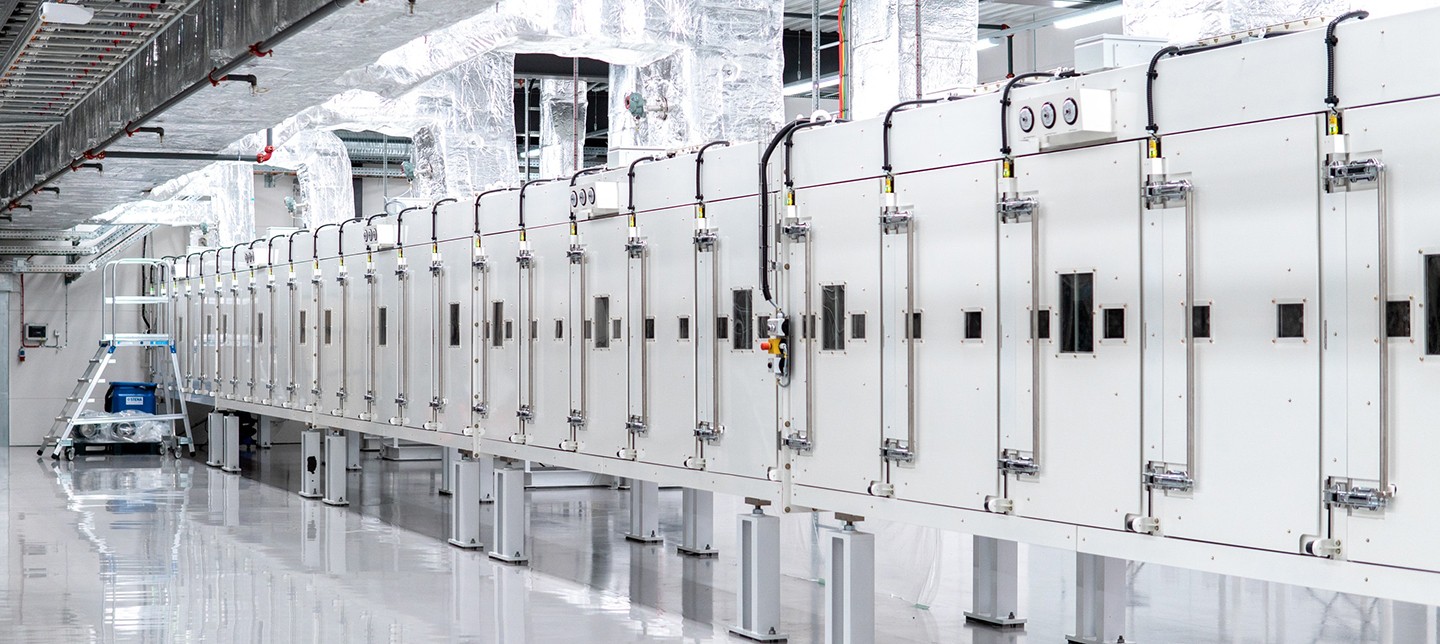
Your Battery Validation Lab Is Already Obsolete. Or Is It?
Keeping up with the pace of change in battery labs means prioritizing updates to guard against obsolescence. Learn how NI can help.

Northvolt’s mission is simple: make the world’s greenest battery. One of the most important aspects of their operation is considering the battery production as a circular process, like a loop. This “loop” goes from sourcing raw materials, through battery production, and to recycling so the active material can be reused to make new batteries (Figure 01). As an example, Northvolt aims at making 95 percent of cell material reusable after end-of-life, thus closing the loop and restarting the process. This is critical to attain the sustainability goals that include less dependency on “new” raw materials, more recycling, and cleaner batteries all around.
Figure 1: Northvolt’s battery manufacturing as a circular process that maximizes sustainability and drives them toward their goal of making the world’s greenest battery.
This perspective of a circular process is applied to Northvolt’s test strategy as well. Their test engineers are challenged to “close the loop” by using as much data as possible to feed back into the manufacturing and test processes. This data must be used to drive conclusions and actionable insights that help optimize and improve both the processes and the battery themselves.
The validation test data we get from NI systems enables our engineering teams to learn more about our batteries and find ways to improve them even after they’re in the field.
—Henrik Rudelius, Director, Validation and Simulation, Battery Systems, Northvolt
Using this approach and data-driven technologies, Northvolt can test batteries beyond safety and quality, to ensure they are sustainable, traceable, and recyclable. Of course, this approach comes with significant challenges that we’ll explore further.
Northvolt uses a wide variety of equipment and solutions that provide data that’s potentially useful. With the variety, differences can be expected (shocking!). One example of the different ways the data is recorded is the decimal place, which can be either noted as a dot or a comma. While it is intuitively simple for engineers to distinguish between 120.5 V and 120,5 V, Northvolt's data platform must automatically address that difference so that the data can be correctly read, correlated, and used to derive insights. Programming this one behavior is not a hard thing to do, but with thousands of battery cells and battery systems deployed in the field, along with large-scale manufacturing and test facilities, these differences add up and can hinder a speedy test development process by forcing engineers to do tasks that don’t add significant value.
Even if all data from all sources came in the same format—which it doesn’t—other challenges cause headaches for engineers. Perhaps the biggest one is the lack of synchronization.
A lot of testing of Northvolt’s battery systems is done outside the lab and around the world, after their batteries are deployed. By getting the data of on-the-job batteries, Northvolt gets better insights on the batteries’ performance that help its engineers understand and eventually improve them.
This data is automatically uploaded by the batteries’ telemetry systems, through many wireless communication capabilities like Wi-Fi, Bluetooth, or cellular. To minimize the effort it takes to use the uploaded data, there are strict guidelines to be followed on how it is recorded, time-stamped, sent to the cloud, and made available for analysis. Doing this at the source certainly saves time—but with limited engineering time, there’s always room for improvement and time saving.
Moving on to the analysis side, after data is consistent, usable, and in the cloud, a productive interface is needed to get to actionable conclusions and insights. Capabilities like interactive plots, flexibility to use Python scripts, and easy and intuitive filtering, are proving to be significant time-savers for Northvolt engineers. And to further improve productivity, some analysis can be directly performed in the cloud, thus saving time from downloading large amounts of data. Let’s look at how this is achieved.
Northvolt has developed what they call the Connected Battery, a solution that involves capabilities for online telemetry, as previously described, as well as for fleet management, local and remote diagnosis, and online software updates to their battery systems.
Through this solution, Northvolt engineers can see and analyze data at a very granular level. Variables like voltage, current, temperature, state-of-charge, and state-of-health, are available to be correlated, analyzed, and used to make fact-based decisions. All of this happens on a secure, web-based interface which also includes capabilities for one-click diagnostics, end-of-life management, or warranty extensions, to name a few.
Through auto-synchronized and interactive plots, engineers can zoom into specific pieces of the data to drive conclusions and insights about the battery. This enables them to continuously make improvements and, in agreement with their customers, push software updates to the battery systems already deployed.
The development time required to come up with a solution like Northvolt’s Connected Battery is heavy, so some limitations regarding scale are starting to surface, driving their engineers to evaluate ways of achieving scalability with minimum development overhead.
Figure 2: Closing the loop at Northvolt drives test teams to effectively use all relevant data from product development and in-the-field batteries to feed back into their processes and improve their products.
Figure 3: NI’s data approach to battery test automates the end-to-end process to help engineers derive insights from test data and harness operational, economical, and technical benefits.
The Companies like Northvolt are extremely capable due to their in-house capabilities and their continuous pursuit to improve upon their solutions. A critical requirement for any new solution to evaluate is the openness to be compatible with Northvolt’s existing equipment and proprietary protocols. Recently, they’ve started to evaluate NI’s battery test solutions such as the Battery Test System, NHR battery cyclers, and SystemLink™ software to complement their capabilities with positive results:
From this evaluation, it’s expected that Northvolt will continue to reduce cost of battery development, accelerate their productivity, and comply with all requirements necessary to make the world’s greenest battery.
At NI, we seek to elevate the role of test from a pass/fail process to an enabler of product performance. We invest in EV test and lifecycle analytics solutions to enable battery manufacturers like Northvolt to use test data to transform their businesses, achieve their missions, and collectively drive the world to a greener future.